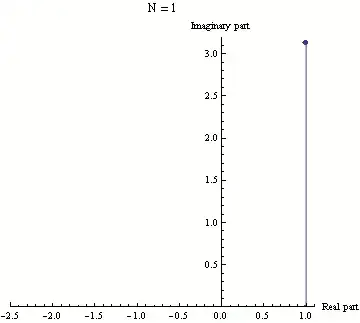$e^{\pi i}$ corresponds to $z = (-1, 0) = -1$ on the unit circle in the complex plane.
That is, it is positioned $\pi = 180^\circ$ from the position (1, 0) on the complex unit circle. It has no "height" in the direction of either $i$ or $-i$.

From $e^{\pi i} = -1$, we obtain Euler's Identity: $e^{\pi i} + 1 = 0$.
Indeed one of the amazing things is that $e$ and $\pi$ have a lot to do with each other:
For example, see Euler's formula: $\quad e^{i\theta} = \cos \theta + i\sin \theta$.
So $e^{\pi i} = \cos {\pi} + i \sin {\pi} = -1 + (i \times 0)$.
A visual image may help make sense of Euler's formula and $e^{\pi i}$:

If you really want to pursue this question, and how Euler came up with his formula, you may want take on the following challenge:
Try computing the Taylor expansion (Maclaurin Series) of $e^{\pi i}$ and see that it equals sum of the Taylor (Maclaurin) expansions of $\cos {\pi}$ and $i \sin {\pi}$. Both sum to $-1$! Or if you are lazy, you can look over at Wikipedia
BOTH $e$ and $i$ are fascinating, because they "crop up" almost everywhere in math, physics, and many other fields. For more ways of representing $e$, look at this list.

